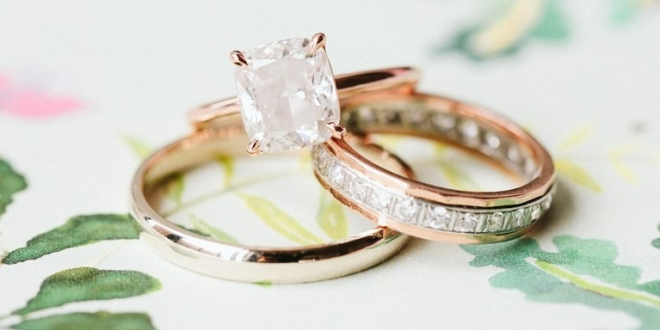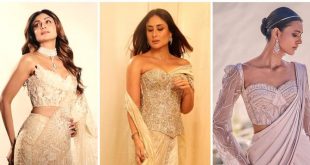“A diamond is forever,” and every girl’s best friend. This precious gemstone indicates loyal and true-hearted love. It is a forever trend to extend a marriage proposal with one of these sparkling and priceless stones.
One gets baffled by the jargons used in the jewellery industry especially when out to buy a diamond ring for the engagement or wedding. Comprehension of the terms is essential for a perfect buy. Here, we try and explain them all for you.
For venues, vendors and A-Z of your wedding planning requirements, contact us at Venuelook.com.
There are certain features that all diamonds share allowing us to compare and assess them. These features are called the 4Cs: Carat, Clarity, Color and Cut.
Diamond Carat

The standard unit of weight, not size, is used for gemstones. One carat is equal to 0.200 grams.
In diamond, the larger stone will have significantly more value. Usually, a two-carat diamond will be more than twice as valuable as a one-carat stone.
The word ‘carat’ comes from the carob tree. Its seed was used as the standard of weighing precious stones. Less than 5% of all the diamonds made into jewellery are larger than one carat.
1. Bezel-setting
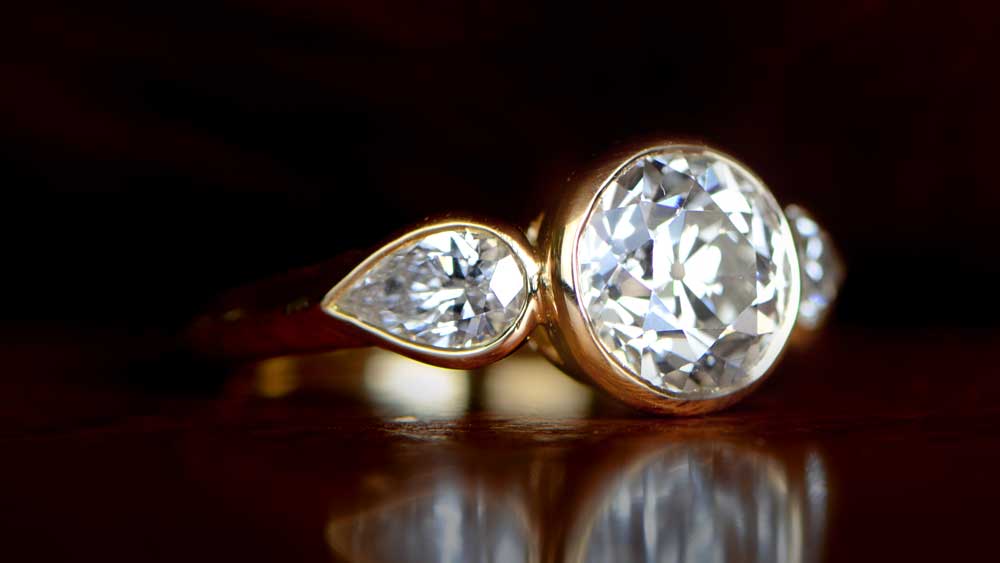
The stone is secured in the mounting by a thin strip of metal surrounding the stone’s perimeter.
2. Blemish
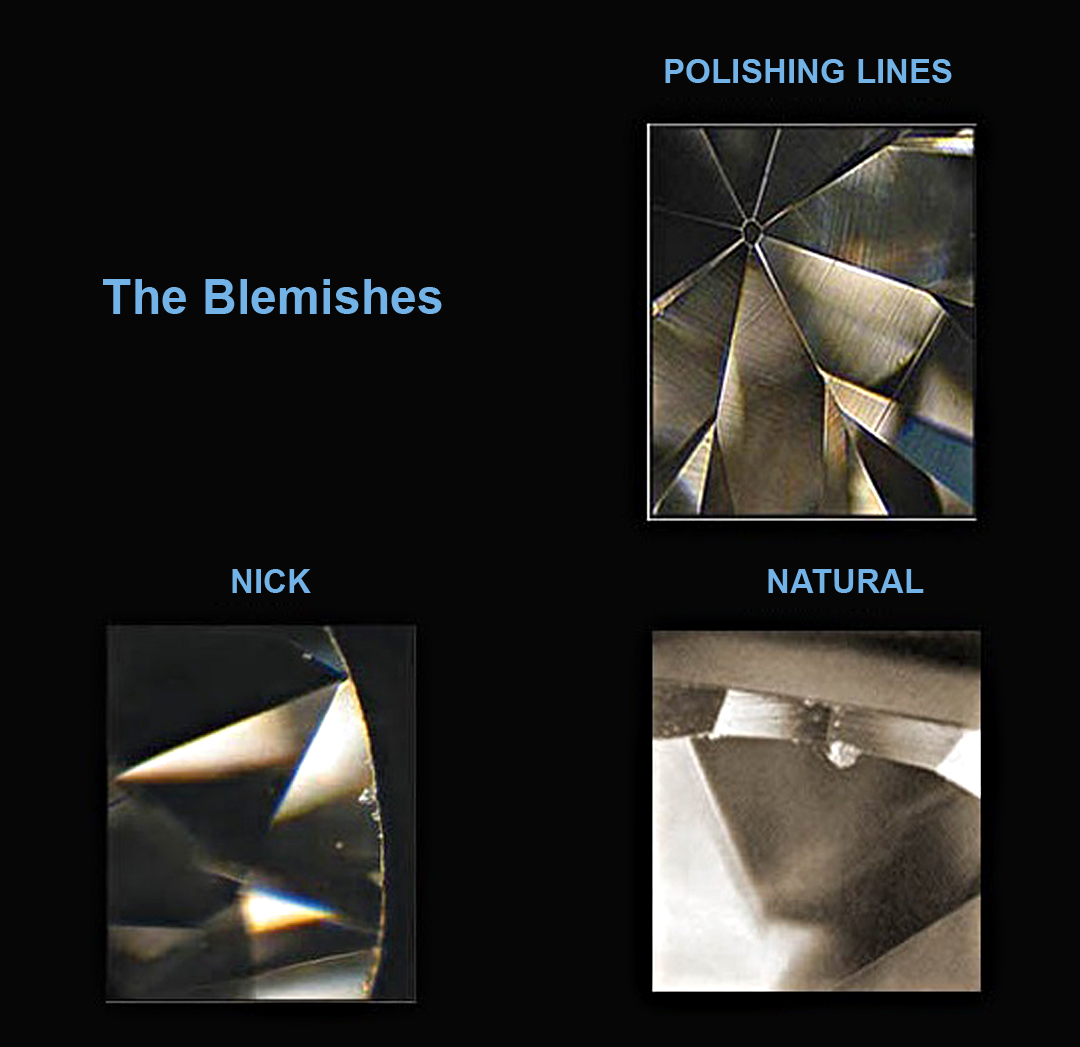
This term is used to describe external characteristics on the surface of the diamond, like nicks, scratches, polish marks, abrasions, naturals and extra facets.
Diamond Clarity
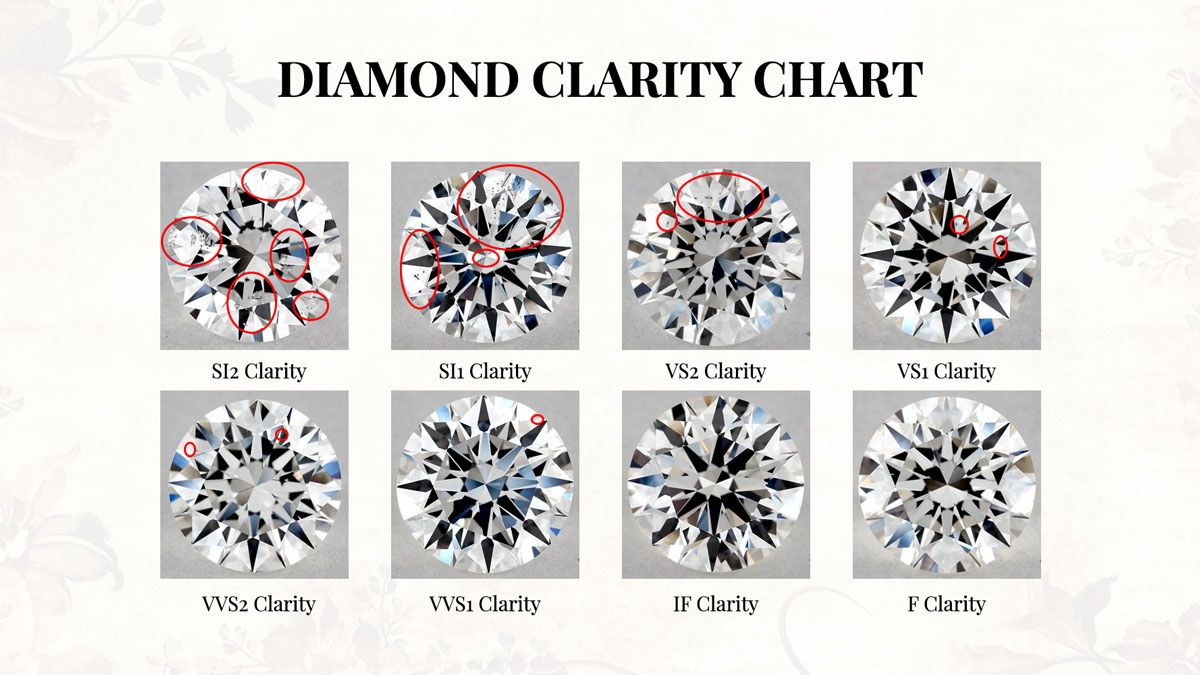
A diamond’s clarity has a direct effect on a diamond’s beauty and price. It is a graded scale that measures the number of imperfections within a diamond. Diamond clarity ranges from flawless diamonds (FL) to severely included (I1).
FL > IF > VVS1 > VVS2 > VS1 > VS2 > SI1 > SI2 > SI3 > I1
Those who prefer a diamond with little or no inclusions will likely choose a clarity rating of FL-IF or VVS. Although they are priced higher, these high-quality diamonds boast a near-perfect appearance.
VS means Very Slight Inclusions, SI means Slight Inclusions
Diamond Color
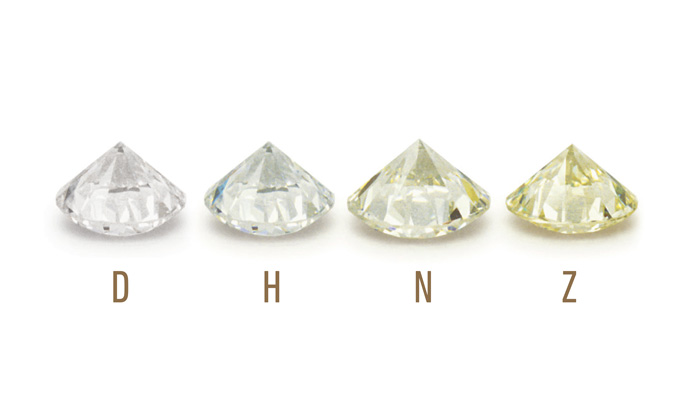
Color tones of diamonds are graded on a scale of D (colourless) to Z (yellow-brown). Understanding what diamond color means helps in choosing the right diamond. Interestingly, the diamond color evaluation of most gem-quality diamonds is based on the absence of color. A chemically pure and structurally perfect diamond has no hue, like a drop of pure water, and consequently, a higher value.
Diamond Cut
The proportion of angle and geometric shape that encompasses both shape and percentage of stone. It determines the stone’s sparkle and radiance capabilities.
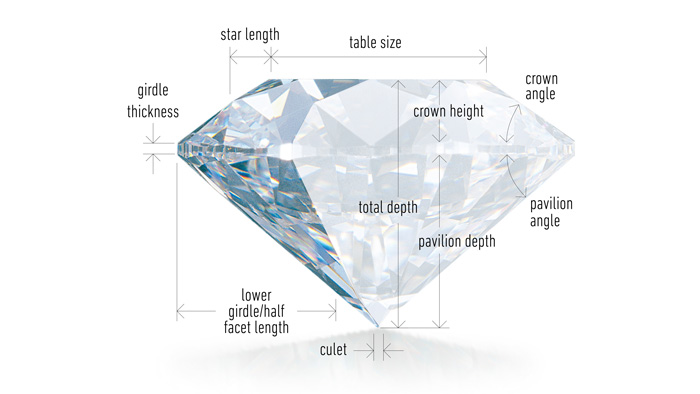
We often think of a diamond’s cut as shape (round, heart, oval, marquise, pear), but what diamond cut actually does mean how well a diamond’s facets interact with light.
Achieving the best cut for a diamond reflects in the stone’s final beauty and value. And of all the diamond 4Cs, it is the most complex and technically difficult to analyze.
You must first determine which shape suits you best before deciding on the diamond that is right for you the diamond that captures the flavour and nature of the love that it symbolizes. Knowing what you want and what your options are would aid you most in making an educated decision, with nine different shapes to choose from. Let’s take a look at the alternatives.
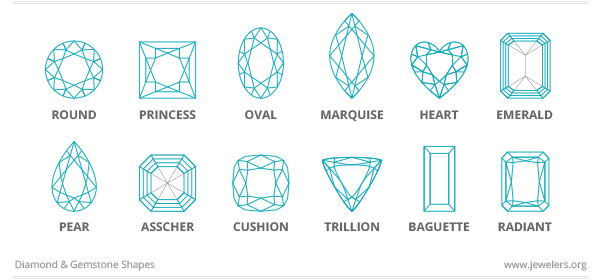
1. The Centered Round
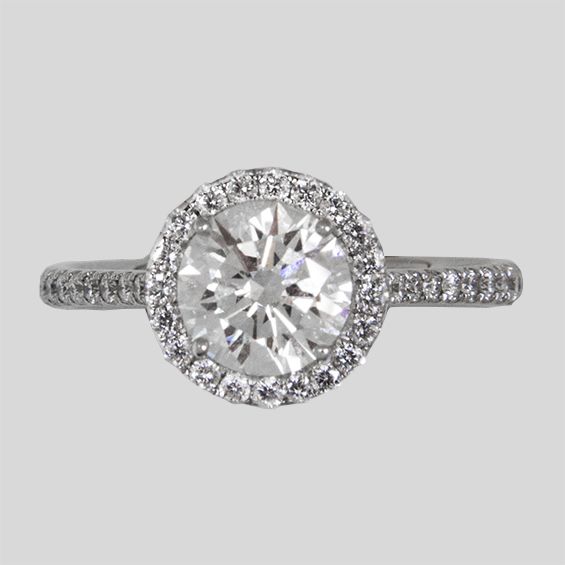
The round cut is both provocative and innocent, with a continuous sphere form. This stone satisfies both the sweet and sultry viewers with an earthly stature and everlasting continuation.
2. The Bold Princess

This classic form, often known as the Square, has a combative and daring flare yet carries the solidarity and finesse in total royalty.
3. The Curvaceous Oval
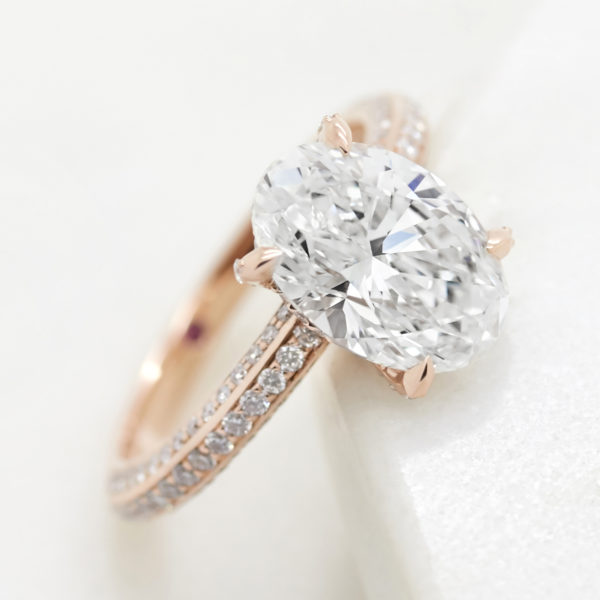
Not only does this curvaceous and feminine form catch and reflect light from all directions, but it also robs many sophisticated women’s hearts. The slightly enlarged shape gives a dominant appearance to the oval.
4. The Elegant Marquise

The beauty emanating from this enticing shape whispers “notice me” and “feast your eyes on excellence.”
The shape is oval and is outlined on both ends by pinpoint flashes of fiery brilliance.
5. Heart Shaped Diamond

The Heart engulfs the essence of the moment, while the Trillion is a classic triangle with varying degrees: long and enduring love that develops over a lifetime.
6. The Symmetrical Emerald

The Emerald signifies equilibrium and serenity, as inside the stone, its four recognised corners hold discipline and order.
This distinctive diamond shape, rectangular in form, emphasises the clear elegance of the stone.
7. The Delicate Pear
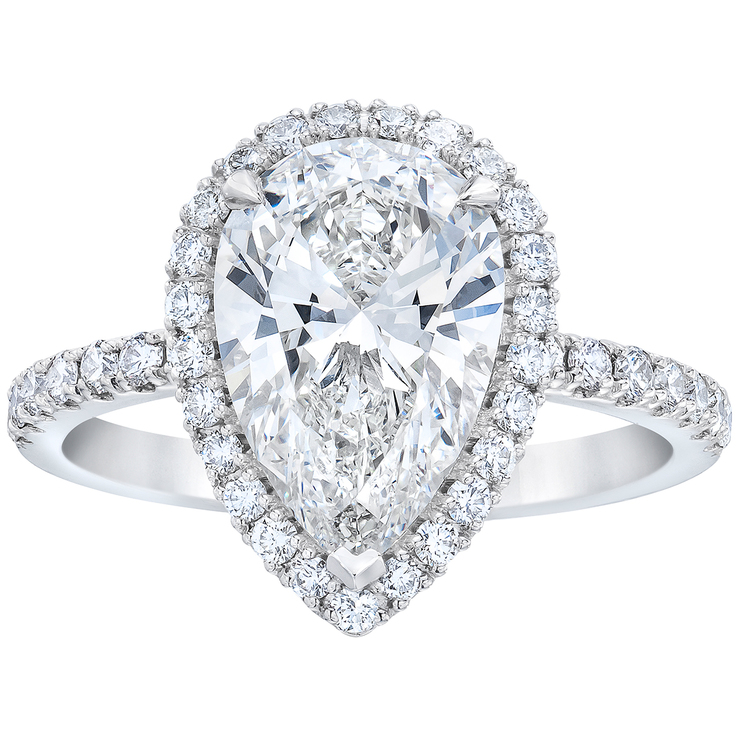
With its undefined lines, this irregularly shaped diamond captures such mystery and mystique.
It is not symmetrical, but on one hand, round and pointing to the other side.
8. Asscher

The Asscher cut is the first signature cut. The Asscher cut aims at showcasing and improving a diamond’s most exquisite and attractive aspects.
9. Cushion
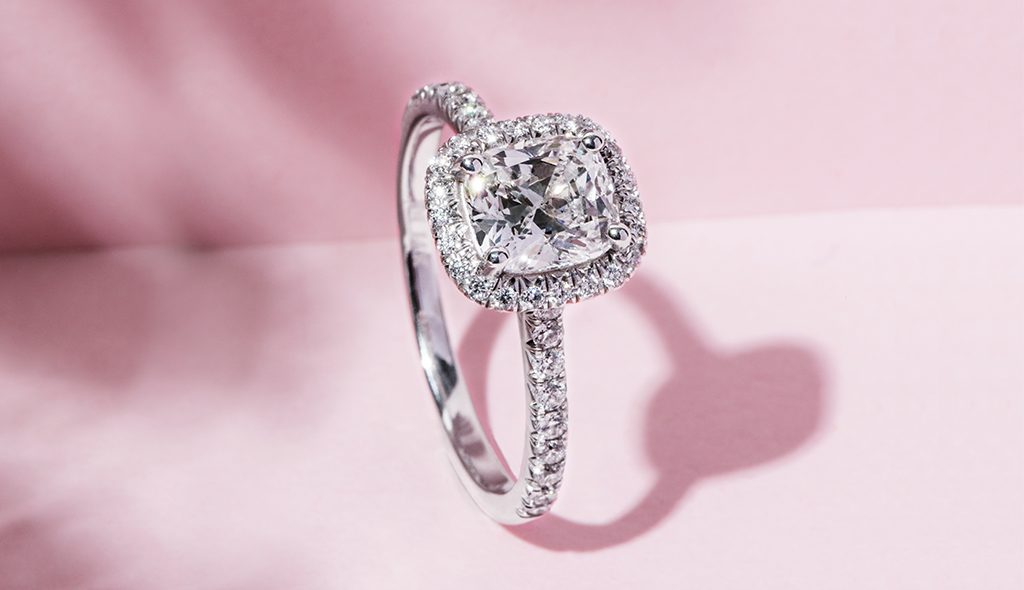
The cushion cut is also called the pillow cut. It is simply a square with rounded corners and sides, like a sofa cushion. It has wide facets. This implies that, despite being a brilliant cut, it returns less light and has a blockier light return pattern.
10. Trillion
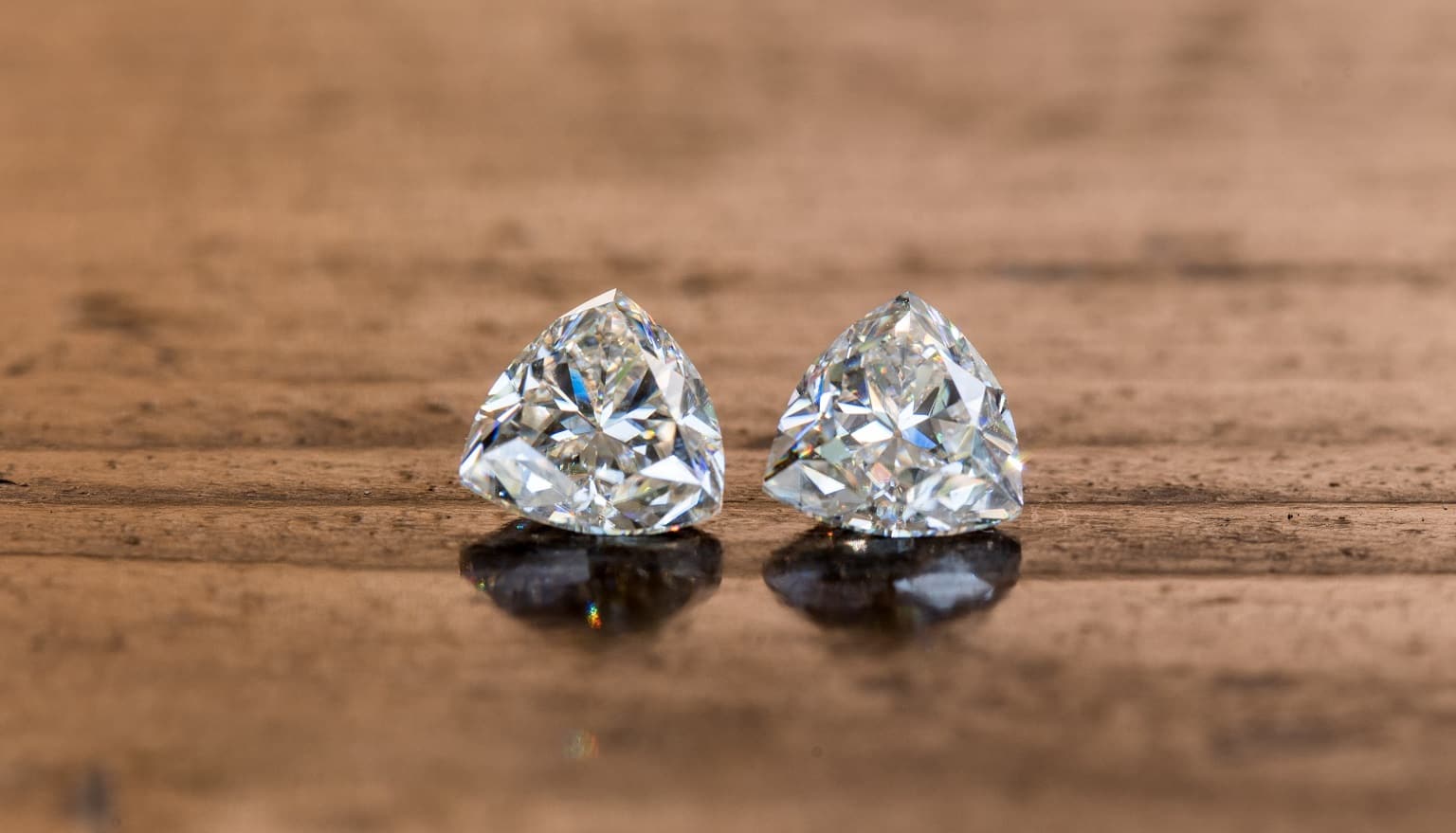
To characterise a gemstone cut that is triangular in shape, the word Trillion or Trilliant is used. Originally, trilliant referred to a diamond-cut developed by the Asscher brothers in Amsterdam.
11. Baguette
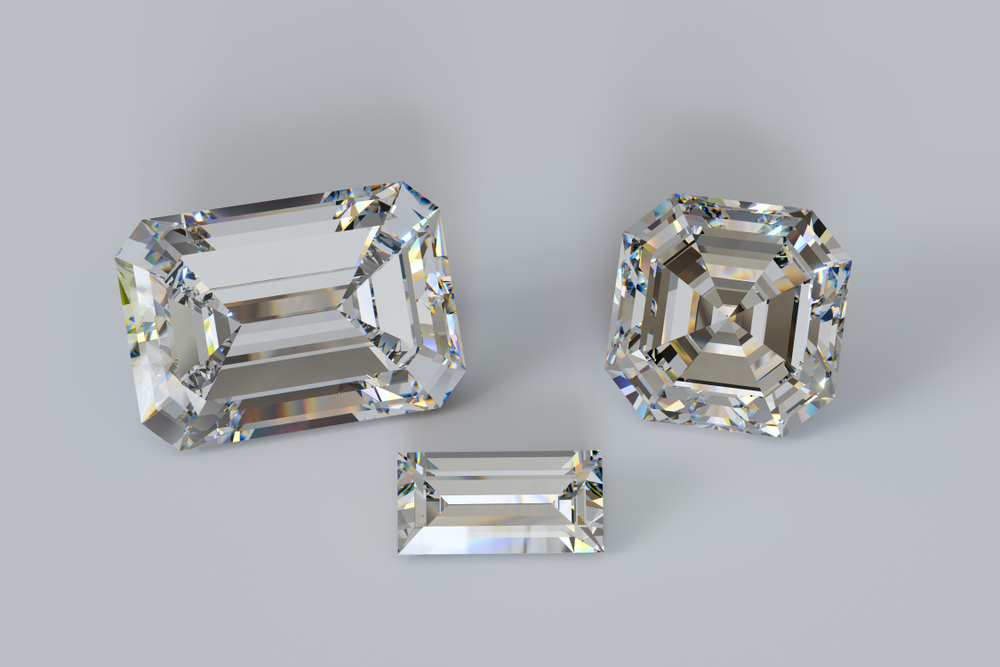
The baguette cut is also called a rectangle cut. Any gem that is cut into a shape that is thin and long, with parallel facets is regarded as a baguette-cut. Usually, a baguette cut would be a step cut and not a brilliant-cut gem.
12. Radiant
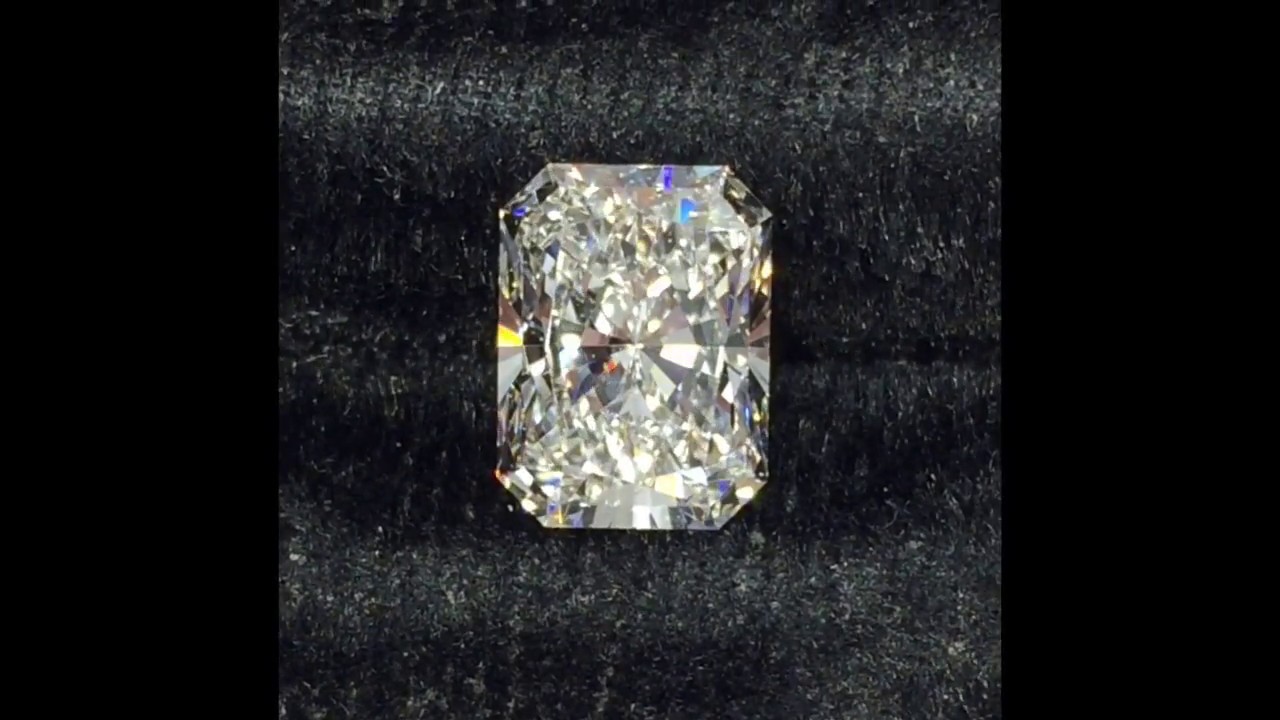
The radiant cut is a rectangular cut with beveled corners. It differs only in the brilliant-cut as well as step-cut facets. This makes it more brilliant than emerald cuts.
Happy Shopping for your Diamonds!
To find the right wedding vendors, visit venuelook.com/vendors. For A-Z of wedding planning and decorations, contact us at weddings.venuelook.com.
You May Also Like:
- Don’t You Need Both Engagement And Wedding Rings?
- Wedding Bands/Rings: The Ultimate Handbook!!
- WED In STYLE – Wedding Themes 101
- He stole her heart. Now she’s stealing his last name. Save the Date, That’s the Plan! – Craft Your E-Invites
- Best Wedding Car Decoration Ideas!
- 6 Best Indian Dishes To Serve At Indian Wedding!
- Tips For The Best Pre-wedding Photoshoot!
- Food Wastage in Indian Weddings
- Unique Mehendi Favours For Guests!!
Have you sent out invitations for your upcoming event? If not, save paper and send free online invitations now.
Looking for a party venue? Browse and book best-suited party venues from VenueLook.com
 Event, Party & Wedding Planning Tips & Ideas for Celebrations Party and Event Planning Tips, Resources and Venues
Event, Party & Wedding Planning Tips & Ideas for Celebrations Party and Event Planning Tips, Resources and Venues
